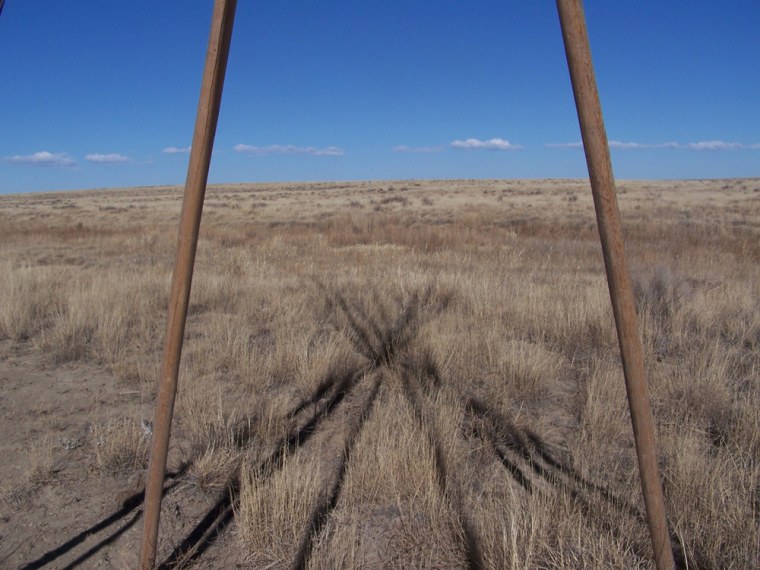More than 142 years after a band of state militia volunteers massacred 150 sleeping Southern Cheyenne and Arapaho Indians in a misdirected act of vengeance, a memorial to the tragic event was officially dedicated Saturday.
The Sand Creek Massacre National Historic site, located 160 miles southeast of Denver on Big Sandy Creek in Kiowa County, pays tribute to those killed in the shameful Nov. 29, 1864, attack.
Seeking revenge for the killings of several settlers by Indians, 700 volunteers who had signed up to be soldiers for 100 days slaughtered nearly everyone in the village. Most were women or children.
Descendants of some of the victims were among several hundred people at Saturday’s dedication on the rolling hills of the southeastern Colorado plains. A mock village of 17 tepees was set up in a grove of cottonwood trees along the creek that historians believe marks the site of the killings.
‘Site of shame’
After a prayer and a blessing for the troops in Iraq, members of the Cheyenne and Arapaho tribes chanted and played drums.
“It’s a site of shame, but it’s finally being memorialized properly,” said David Halaas, a former state historian. He said even though the militia members weren’t soldiers, they were paid and armed by the federal government.
Eyewitness accounts of the attack include a letter from Lt. Joseph Cranmer: “A squaw ripped open and a child taken from her. Little children shot while begging for their lives.”
Tribe descendants claim they can still hear the children cry when they visit the site.
“If there were any savages that day, it was not the Indian people,” said former Sen. Ben Nighthorse Campbell, R-Colo., a member of the Northern Cheyenne tribe.
Attack drew instant condemnation
Campbell, who sponsored the legislation making the spot a national historic site, said he slept beside the creek Friday night “to get a picture” of what the people saw before the attack. He said they felt safe, partly because some of them were married to whites.
“I think this is a pretty good time to own up to it. War crimes were committed here,” said Eugene Little Coyote, president of the Northern Cheyenne tribe.
Although it has taken more than a century to build a memorial, the attack was recognized almost immediately as criminal. Congress condemned it and President Lincoln fired territorial Gov. John Evans.
Witnesses told a congressional hearing that the victims were not hostile. Indian trader John S. Smith testified that the militia’s leader, Col. John Chivington, knew the band at Sand Creek was peaceful and was not involved in the attacks on settlers.
But Chivington, a Methodist minister known as “the fighting parson,” was feted by Denver residents as a hero after the raid. They were terrified that the Confederacy would use Indians as their surrogates to wage war on them.
“Among the brilliant feats of arms in Indian warfare, the recent campaign of our Colorado volunteers will stand in history with few rivals, and none to exceed it in final results,” read an editorial in the Rocky Mountain News at the time.
Ignited Battle of little Bighorn
A Civil War memorial installed at the Colorado Capitol in 1909 listed Sand Creek as a great Union victory. But a plaque was added in 2002 giving details of the massacre to set the record straight.
The Indians that Chivington attacked were camped at a site on the sagebrush- and yucca-dotted plains assigned to them by the Army. When the attack started, Southern Cheyenne Chief Black Kettle hurriedly hoisted a U.S. flag above his lodge, but to no avail. Black Kettle survived but was killed in an attack at Washita, Okla., in 1868 by soldiers led by Col. George Armstrong Custer.
The attack on Sand Creek triggered many retaliatory attacks by Indians, including the Battle of the Little Bighorn, where Custer was killed. “It did trigger more killing. There is never just one incident and closure after that,” said Patricia Limerick, author of “Legacy of Conquest” and chairwoman of the University of Colorado’s Center of the West.
“There may be stories of equal anguish in our history but this is right up at the top,” she said.
